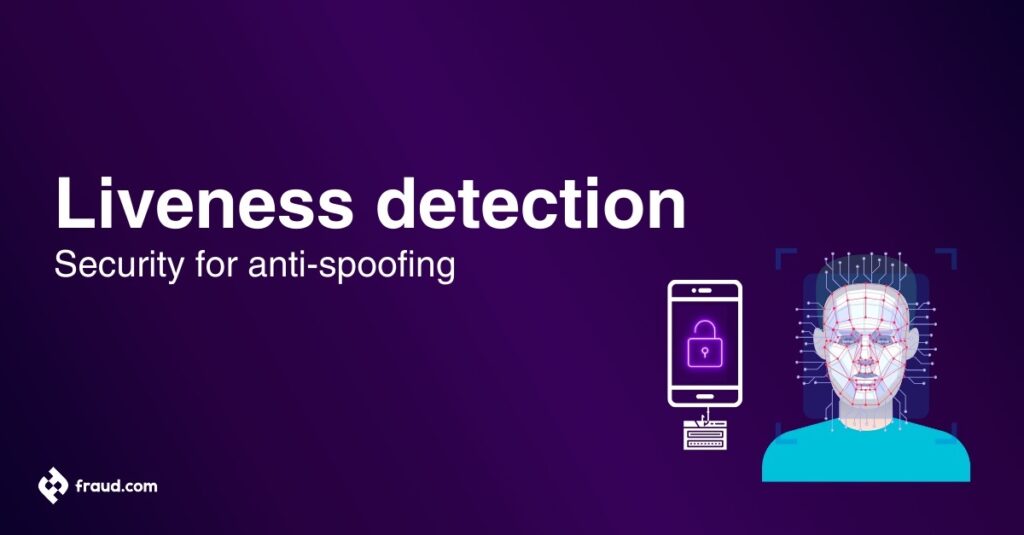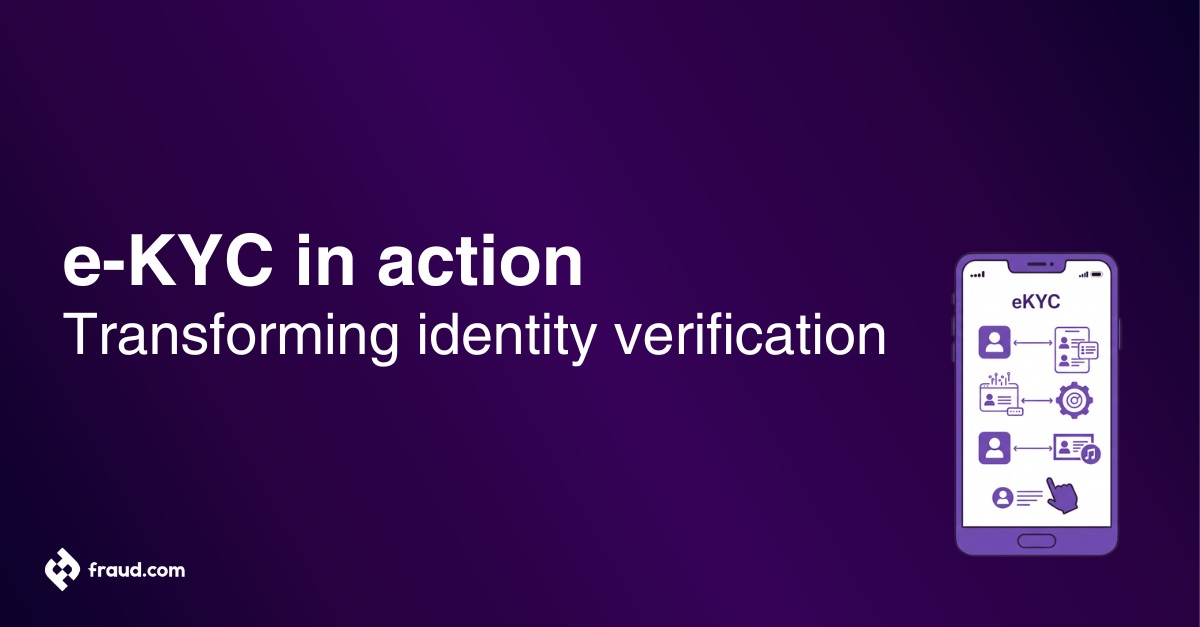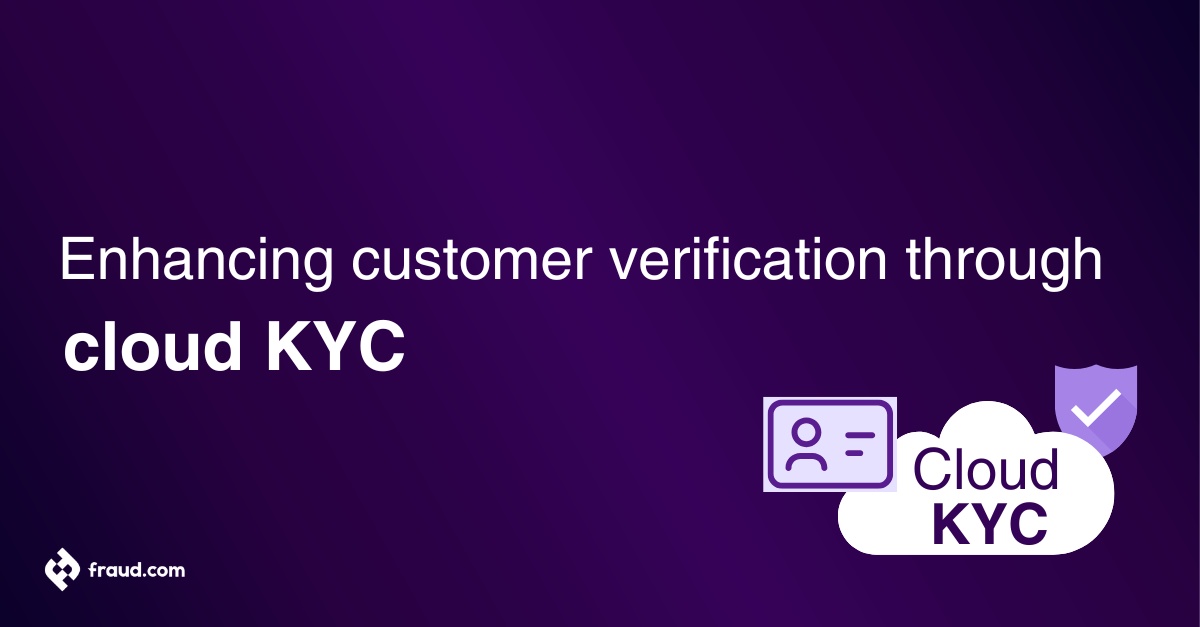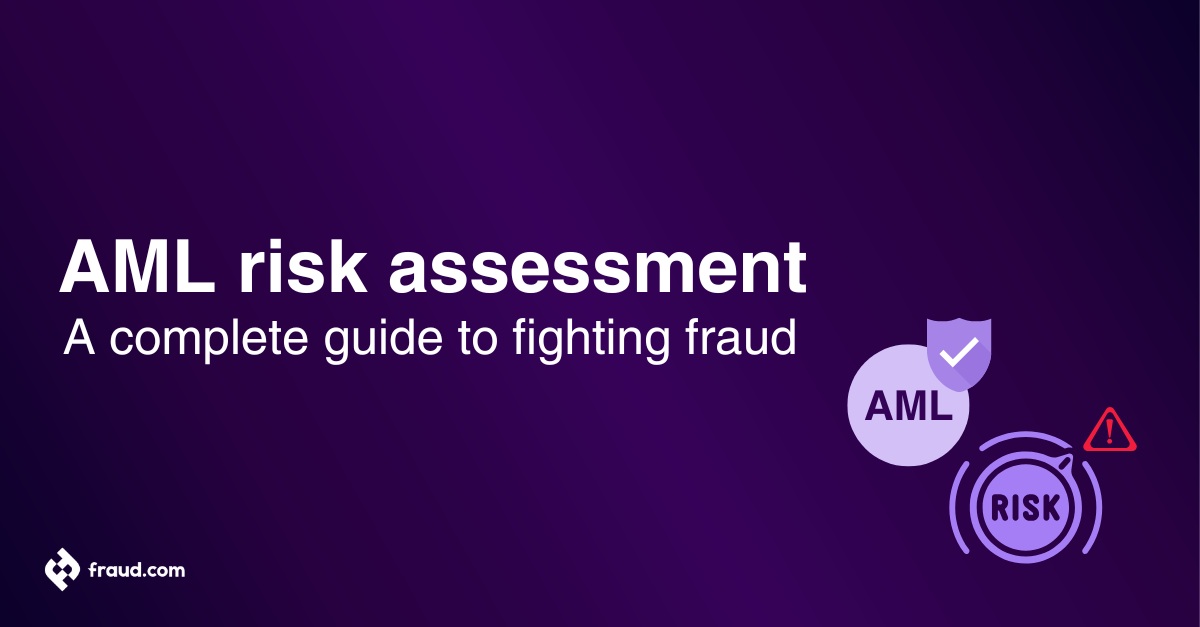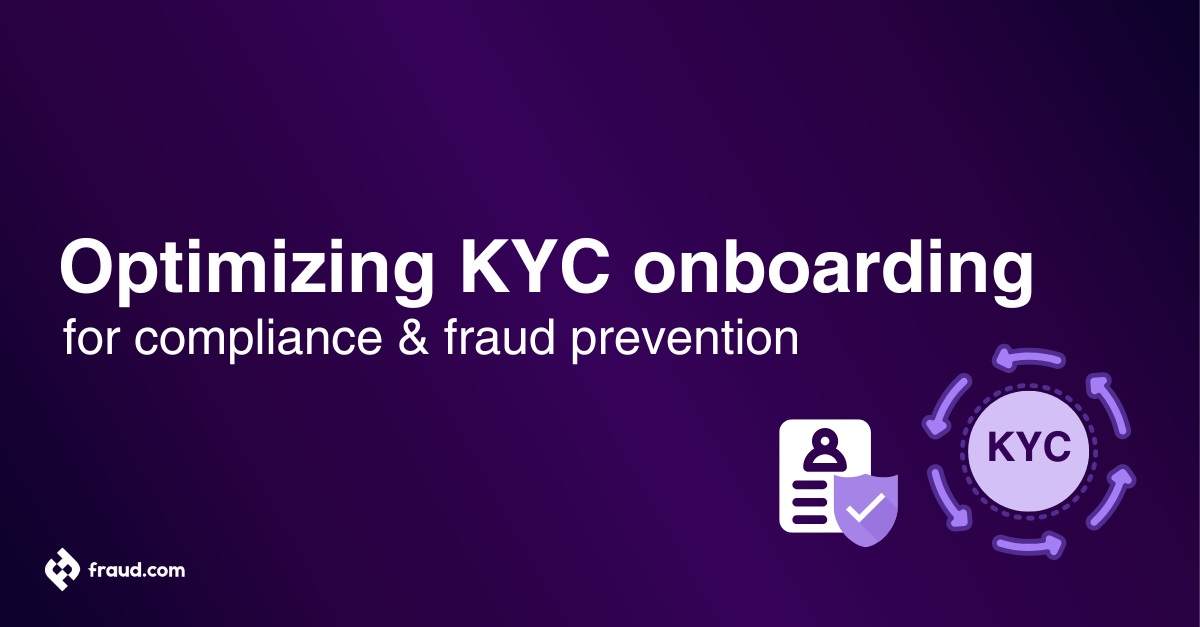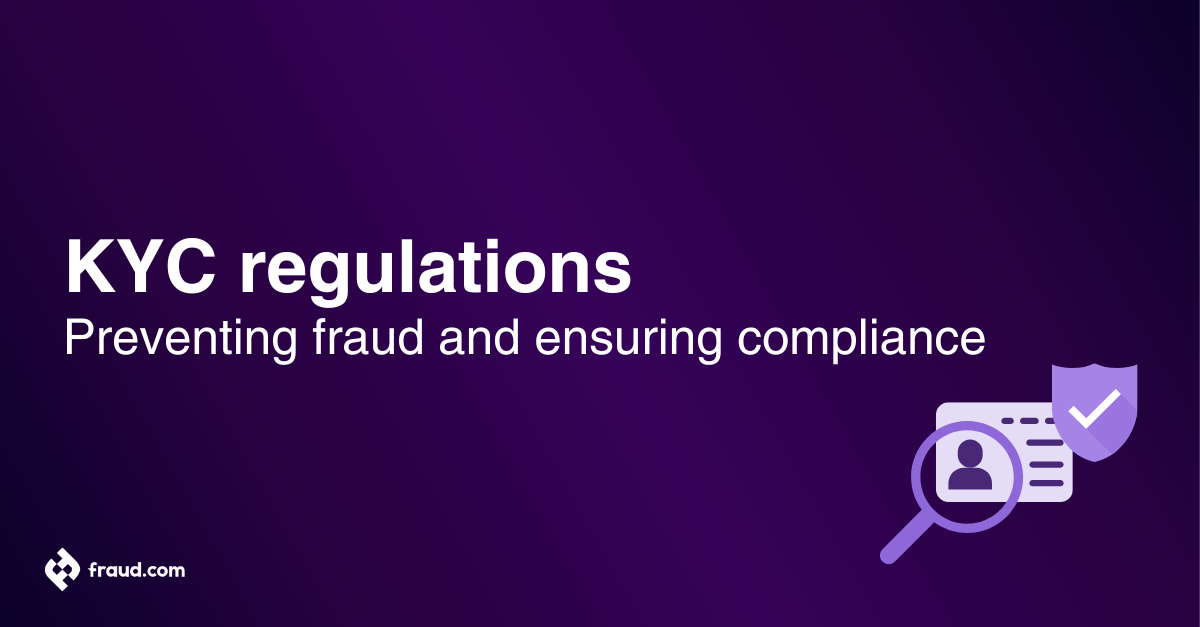Think about how you use your biometrics (fingerprints, face, iris, etc.) daily to authenticate yourself. Now imagine if someone could spoof your biometrics and gain access to your devices, accounts, and sensitive information.
This may sound like something out of a science fiction movie, but it’s a real possibility, especially in today’s digital age, where we are constantly faced with the threat of being scammed.
That’s why biometric liveness detection is so important. Liveness detection prevents biometric spoofing by ensuring that a biometric measurement comes from a live human being and not from a fake biometric template.
Given this technology’s potential to prevent spoofing, it’s vital that you understand its ins and outs. Read on to learn everything you need to know about liveness detection.
Table of Contents
ToggleWhat is liveness detection?
Liveness detection is the process of verifying that the person presenting the biometric data is alive and present, rather than using fake representations such as a photograph or recorded video. In other words, it’s a technology that helps to ensure the authenticity of a person by looking for genuine signs of life.
The main purpose of liveness detection is to prevent biometric spoofing, a type of fraud that uses fake biometric data to gain access to devices, accounts, or sensitive information, which can lead to identity theft, identity fraud and account takeover fraud. In many situations a liveness check is used during the identity verification process for customer onboarding.
With liveness detection, biometric spoofing becomes much more difficult because the technology can detect whether the biometric data being presented is from a live person. It prevents fraudsters from accessing the user’s data to commit fraud or using stolen biometric data such as fingerprints to access secured systems.
How does liveness detection work?
Liveness detection employs a variety of methods and technologies, each contributing to its efficacy in discerning live biometric data from fraudulent attempts. These methods include:
- AI/ML-based detection: Utilizing artificial intelligence and machine learning algorithms, liveness detection systems “learn” patterns of live biometric data, enabling them to flag deviations from expected behavior as potentially fraudulent.
- Motion analysis: Motion analysis algorithms scrutinize subtle movements like blinking or head movements, leveraging these indicators to confirm the presence of a live subject before granting access.
- 3D depth sensing: By employing 3D depth sensing technologies, liveness detection systems assess the three-dimensional structure of biometric features, enhancing their ability to differentiate between live subjects and replicas.
- Texture analysis: Texture analysis techniques delve into the surface texture of biometric features, such as facial skin, to identify characteristics consistent with live subjects, such as subtle changes in texture due to blood flow or facial expressions.
- Challenge-response tests: Liveness detection systems often incorporate challenge-response tests, where users are prompted to perform specific actions like blinking or smiling, which are then analyzed to confirm their live presence.
- Multi-modality integration: Some systems integrate multiple biometric modalities, such as facial recognition, fingerprint scanning, or iris recognition, to enhance the robustness of liveness detection and mitigate the risk of spoofing attempts.
- Artificial intelligence and deep learning: Artificial intelligence and deep learning algorithms play pivotal roles in liveness detection solutions. These technologies enable systems to “learn” the characteristics of live biometric data, facilitating the detection of anomalies and potential fraudulent activities.
- Machine learning: Machine learning techniques are also adopted in liveness detection, where algorithms are trained on large datasets to recognize patterns indicative of live behaviour, further enhancing the accuracy and effectiveness of the authentication process.
By integrating these diverse approaches, liveness detection systems can effectively differentiate between live users and fraudulent attempts, thereby bolstering the security and reliability of biometric authentication systems.
Why is liveness detection important?
Liveness detection is essential for ensuring the security of biometric authentication. In this section, we’ll explore key reasons why it’s significant, from preventing spoofing to engaging users actively. Let’s delve into its importance:
Prevention of spoofing
Liveness detection serves as a critical defense mechanism against spoofing attempts, ensuring that only genuine, live individuals can access the system.
Enhanced security
By verifying the authenticity of biometric data in real-time, liveness detection significantly strengthens the overall security posture of authentication systems.
Fraud prevention
By detecting and preventing spoofing attempts, liveness detection helps in minimizing fraudulent activities, protecting valuable assets, and maintaining the integrity of systems.
Privacy protection
Liveness detection ensures that biometric data is only captured from live individuals, thereby preserving user privacy and preventing the unauthorized use of biometric information for malicious purposes.
Mitigation of unauthorized access
Without proper liveness validation, there exists a heightened risk of unauthorized access through fraudulent means, potentially compromising sensitive data or resources.
Differentiation of live behaviour
Liveness detection algorithms analyze subtle cues indicative of live behavior, such as blinking or head movement, to differentiate between genuine users and spoofing attempts.
Universal applicability
Liveness detection is applicable across various biometric modalities, including facial recognition, fingerprint scanning, and iris recognition, ensuring comprehensive security coverage.
Active user engagement
Through prompts for specific actions, such as blinking or nodding, liveness detection actively engages users in the authentication process, reinforcing the verification of live presence.
In summary, liveness detection plays a pivotal role in safeguarding biometric authentication systems against unauthorized access and spoofing attacks, thereby upholding the integrity and reliability of the authentication process.
The importance of liveness detection technology
Liveness detection technology ensures that the person accessing a particular account or service is the legitimate owner. Verification is crucial in the case of sensitive information such as banking details or medical records.
Biometric liveness detection can also prevent fraud and identity theft. This technology can protect against unauthorised access by checking that the person trying to access an account is the rightful owner.
Liveness detection offers more consumer protection because it is difficult to hack. Today, identity theft is rising through identity forgery using masks, videos, and photos. Hackers use these tricks to exploit loopholes and gain access to areas that require digital signatures.
For example, hackers can use deep fake human image engineering in biometric scans to imitate another person’s biometric data. However, with liveness detection, deep fake doesn’t have a chance because the biometric verification will only work if there is enough proof that the shown data is real and not recorded.
Today, it’s difficult for hackers to render deep fakes in real-time as this requires considerable computing resources. Furthermore, it’s difficult to access different sources of high-quality video and audio materials to train the deep fake model.
Liveness detection benefits
Liveness detection offers a multitude of advantages in bolstering security and ensuring the integrity of identity verification processes. By verifying that the biometric data being captured is from a live person and not a spoofed or replayed image or video, liveness detection enhances the robustness of authentication systems. Let’s explore some of the key benefits it provides:
- Streamlined identity verification: Liveness detection streamlines the identity verification process by ensuring that the biometric data captured is authentic, reducing false rejections and improving the overall user experience.
- Identity theft protection: By detecting and preventing presentation attacks, where attackers attempt to impersonate legitimate users using fake or stolen biometric data, liveness detection protects against identity theft and unauthorized access.
- Presentation attack detection: Liveness detection helps detect various presentation attacks, including spoofing attacks using printed photos, masks, or digital replicas, thereby enhancing the reliability of biometric authentication systems.
- Protection from deepfakes: With the rise of deepfake technology, which creates realistic fake videos or images, liveness detection serves as a crucial defense mechanism, ensuring that only genuine biometric data is accepted during authentication.
- Fraud prevention: By mitigating the risk of fraudulent activities such as account takeovers and unauthorized access attempts, liveness detection contributes to overall fraud prevention efforts, safeguarding sensitive information and assets.
- Enhanced security: Liveness detection enhances the security of biometric authentication systems by adding an additional layer of verification, making it more difficult for attackers to bypass or manipulate the authentication process.
- Upholding privacy: By ensuring that only live biometric data is used for authentication, liveness detection helps uphold user privacy and data protection principles, minimizing the risk of unauthorized data access or misuse.
These benefits highlight the importance of incorporating liveness detection into biometric authentication systems, enabling organizations to strengthen security measures and provide users with a reliable and secure authentication experience.
What are the types of biometric verification?
If you’re in the market for biometric verification, you may be wondering what biometric types are available. Here are the options you’re likely to find:
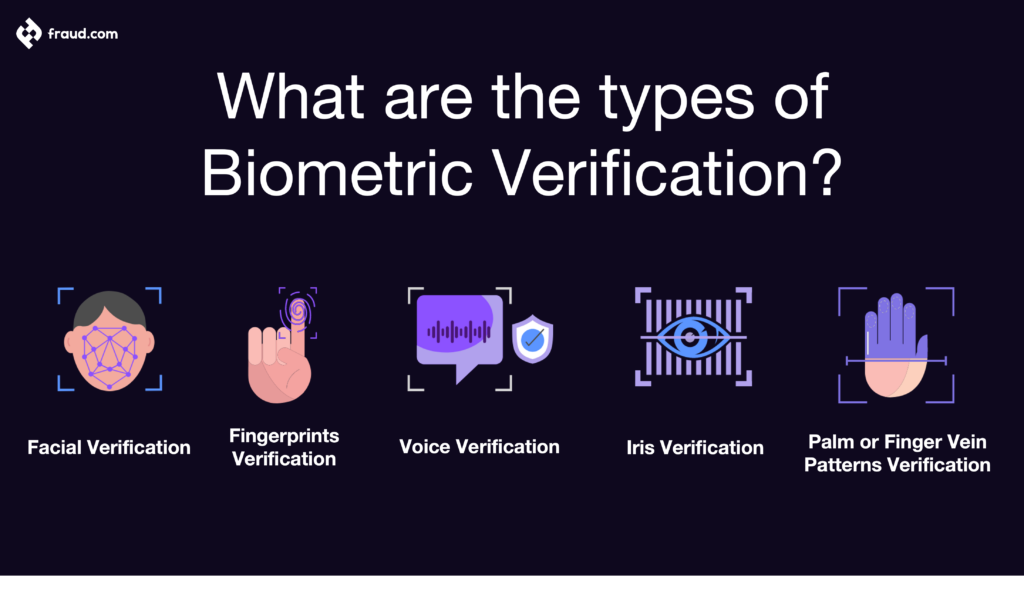
Facial verification
Facial verification uses facial features to authenticate an identity. It relies on facial recognition technology to identify individuals by mapping facial features and comparing them to a database of known faces. You can use this method for various purposes, including security, attendance, and marketing.
To use facial verification, you should capture an image of the person’s face. You can do this with a regular camera or a specialised biometric camera. The image is then converted into a digital template that can be stored on a computer.
When the person tries to access the system, the facial recognition software will compare the live image with the stored template. If there is a match, the person will be granted access.
Fingerprints verification
Fingerprint verification uses the patterns in a person’s fingerprints to confirm that a person is who they claim to be. It takes an image of the subject’s fingerprint and then compares it to an existing database. The subject’s identity can be confirmed if there is a match.
Fingerprint verification is often used for security purposes, as fingerprints are unique. However, you should note that fingerprints can be stolen, so additional security measures may be necessary.
Voice verification
This type of biometric verification leverages an individual’s voice to confirm who they are. Also known as voice recognition, this technology is often used in security systems to grant access to buildings or restricted areas. Voice verification works by recording an individual’s voice and creating a voiceprint.
The voiceprint is then used to verify their identity when they attempt to access a system or device. Voice verification is a convenient and secure way to verify someone’s identity, as it does not require physical contact between the person and the system.
Iris verification
The iris is the coloured ring around the pupil of the eye, and each person’s iris is unique. To perform iris verification, an image of the iris is first captured. This image is then converted into a digital template, which is used to compare against a database of known irises.
If there is a match, the individual can be identified. Iris verification is very accurate and is often used for high-security applications, such as airport security or access to government buildings.
Palm or Finger Vein Patterns Verification
As the name suggests, this verification relies on the patterns in a person’s palm or fingers to verify their identity. Palm or finger vein patterns are formed by the veins in the hand, which are visible through the skin. These patterns are unique to everyone, making them perfect for identity verification.
A person places their hand on a special scanner, which reads the vein patterns and confirms whether they’re available in the database. Palm or finger vein verification is a quick and convenient way to verify a person’s identity, and it is more accurate than other methods, such as fingerprinting.
What are the types of liveness detection?
Identity verification solutions mostly rely on two liveness detection types. These include active and passive detection. Each of these types has its own unique features and drawbacks, which is why you should carefully consider which one is right for your needs.
Here are more details about what each of these types of liveness detection entails:
Active liveness detection
This type of liveness detection requires the user to perform a specific gesture, such as blinking, smiling, or speaking. The biometric sensor will then capture an image or recording of the user performing the required action. This image or recording is then compared to the stored template to verify the user’s identity.
Active detection can be disruptive and inconvenient for users, as they are required to perform a specific action. The user experience is unfriendly as one must move their head up and down or left and right. Such demands make most people perceive this type of liveness detection as inconvenient.
Active detection is also more vulnerable to cybercrime because its machine learning model is not sophisticated. It’s more susceptible to presentation attacks involving silicon masks, video, or synthetic voices to spoof the biometric system. Some of the artefacts used to bypass an active liveness detection system are low-tech.
For example, suppose the active liveness system requires you to blink. In that case, a criminal can wear a print-out image of the user they are impersonating and leave a space for the eye. If they are wearing another person’s face and blink when the system asks them to, the biometric solution will verify the identity of the wrong person.
Passive liveness detection
Passive detection does not require active participation from the user. Everything runs in the background without the user’s knowledge that their biometrics are being collected and verified. This type of liveness detection uses artificial intelligence (AI) models to assess whether the biometric template comes from a live person or not.
It uses an algorithm that assesses an image and identifies the presence of a false representation of a user. The technology can detect cut-outs and masks, texture, borders, skin, and anything else that can be used to impersonate a user. Passive liveness detection doesn’t alert users that verification is ongoing, making it difficult for fraudsters to devise a way to cheat the system.
The deep machine learning in passive detection makes it more sophisticated and difficult to breach than active liveness detection. It can determine more points of comparison and make a more reliable decision about the user’s biometrics. 3D masks and deep fakes can hardly beat this technology.
A key benefit of passive detection is that it makes it easy to onboard new users. It’s also frictionless, meaning that users don’t have to go through the inconvenience of performing specific actions to verify their identity.
Difference between active and passive liveness detection
The key difference between active and passive biometric liveness detection is that active detection requires users to gesture, while passive biometric liveness detection does not. With the former, you must follow gestures such as blinking or smiling. On the other hand, passive biometric liveness detection uses artificial intelligence algorithms to detect imposters without the user’s knowledge.
Active biometric liveness detection is more vulnerable to spoofing because it’s easier to fake specific gestures. Attackers can breach an active liveness detection system using low-tech artifacts and gadgets such as cut-out masks, if they are in 3D.
On the contrary, passive biometric liveness detection is more sophisticated and challenging to spoof because it uses deep learning algorithms to detect even the slightest changes in biometric templates.
Regarding user experience, passive biometric liveness detection is more convenient because users don’t have to take specific actions to verify their identity. Users don’t have to engage in uncomfortable nodding, smiling, or turning their heads. On the other hand, active biometric liveness detection is more demanding and less user-friendly.
What is face liveness detection?
Face liveness detection is a biometric technique used to detect whether a biometric facial image presented for verification is alive or not. A typical example would be using a selfie to unlock your phone or an account. For the selfie to be verified, the face liveness detection algorithms need to confirm that the person in the selfie is alive, not a photo or video.
There are various ways to perform face liveness detection, but one common method is to use infrared light. Infrared light is invisible to the naked eye but can be detected by special cameras.
When light is shone on a person’s face, it will reflect off the skin in a unique pattern. By analysing this pattern, the face liveness detection algorithms can confirm that the face is live.
Liveness detection for face recognition verifies user identity by using biological identifiers that are unique to every individual. The technology checks for any differences that may indicate that the biometric image doesn’t belong to a live human being.
Face liveness detection makes it easy to identify deep fakes and avatars since the technology uses a texture-based algorithm. It can tell when a recaptured user’s version is presented in place of the real person.
Advanced liveness detection techniques
In addition to the fundamental methods of liveness detection, advancements in technology have led to the development of more sophisticated techniques, including:
Fingerprint scanning
Beyond basic fingerprint recognition, advanced liveness detection techniques in fingerprint scanning analyze additional factors such as blood flow, skin elasticity, and temperature variations to ensure the authenticity of the captured fingerprint.
Voice recognition
Advanced voice recognition systems utilize dynamic features such as pitch, tone, and cadence analysis to differentiate between live speech and recorded samples. Liveness detection in voice recognition may involve prompting users with specific phrases or challenges to verify their live presence.
Iris recognition
In iris recognition, advanced liveness detection techniques involve analyzing factors such as pupil dilation, iris texture, and eye movement patterns to confirm the presence of a live subject. These techniques enhance the security and reliability of iris recognition systems by thwarting attempts to spoof the authentication process with static images or replicas.
Facial Action Coding System (FACS)
This technique involves analyzing facial muscle movements and expressions using computer vision algorithms. By detecting subtle changes in facial features associated with live behavior, FACS-based liveness detection enhances the accuracy of facial recognition systems.
Electrocardiogram (ECG) biometrics
Advanced liveness detection techniques may utilize ECG biometrics, which analyze the electrical activity of the heart, to verify the presence of a live subject. By measuring unique cardiac patterns, ECG biometrics offer a robust means of confirming the vitality of biometric data.
Gait analysis
Gait analysis involves assessing the distinctive walking patterns of individuals using motion sensors or video analytics. By analyzing factors such as stride length, pace, and cadence, gait analysis can discern between live subjects and imposters attempting to mimic walking movements.
Behavioral biometrics
Advanced liveness detection may incorporate behavioral biometrics, which analyze patterns of user behavior such as typing dynamics, mouse movements, or touchscreen interactions. These behavioral patterns serve as additional indicators of live presence and enhance the security of biometric authentication systems.
By incorporating these advanced liveness detection techniques, biometric authentication systems can achieve greater accuracy, resilience against spoofing attacks, and overall reliability in verifying the live presence of users.
In which business types can liveness detection be used?
Liveness detection can be used in various business types to minimise fraud and protect user data. The major business industries that would benefit from liveness detection include:
Gaming
In the gaming industry, you can use liveness detection to prevent cheating. For example, a player may use a photo or video of another player to impersonate them and take their place in the game.
With liveness detection, however, it would be possible to confirm that the player is indeed who they say they are and that they are playing the game in real-time. This would ensure that only real players can compete and that no one is cheating.
Crypto
In the cryptocurrency industry, liveness detection can prevent crypto fraud when users are buying or selling digital currencies. For example, a user may try to use a fake ID to purchase cryptocurrency, or they can access someone’s account to steal their crypto assets.
Liveness detection would help to confirm the buyer’s identity and ascertain that they are not trying to purchase currency fraudulently or steal someone’s crypto assets. By verifying that a user is physically present at the time of the transaction, liveness detection can help to ensure that only legitimate transactions are processed.
Finance
In finance, liveness detection is used to prevent fraudsters from using stolen biometric information to access accounts. For example, if someone tries to use a facial recognition system to unlock a bank account, the liveness detection feature would ensure that the person is present and not just holding up a photo of the account holder. This technology is highly accurate and can prevent a wide range of fraud, from identity theft to account takeover.
Insurance
Liveness detection can be used in the insurance industry to verify the identity of policyholders. For example, if a customer is trying to file a claim, the insurance company could use liveness detection to confirm that the person is who they say they are.
The technology would help to prevent fraud and ensure that only legitimate claims are paid out. Liveness detection can also prevent fraud in insurance by verifying the identity of agents and brokers.
Aviation
The aviation industry would benefit from liveness technology due to the high level of security it requires. For example, liveness detection can be used to verify the identity of pilots when they are trying to access aircraft. The verification would prevent unauthorised people from gaining access to sensitive areas.
The advantages of liveness detection
There are several key advantages that businesses can gain from using liveness detection. Perhaps most importantly, it can help to prevent fraudulent activities from taking place. By verifying that the person carrying out a transaction is who they say they are, businesses can reduce the risk of losing money through scams or other types of fraud.
Liveness detection can also protect against identity theft. It can help verify customers’ identities, allowing businesses to reduce the chances of fraudsters stealing someone else’s personal information and using it to commit fraud. Liveness detection can help ensure that only authorised users can access sensitive data or systems.
Biometric liveness detection can improve customer service. By verifying customers’ identities, businesses can ensure that they are dealing with real people rather than fraudulent accounts.
If a customer is having trouble with their account, for example, being able to speak with a real person rather than an automated system can make a big difference. This can help to improve customer satisfaction and reduce the chances of customers becoming disgruntled with a company’s services.
Our liveness detection solution – Udentify
Udentify from fraud.com can help you actualise your dream of using liveness detection to prevent fraud in your business. Our liveness detection solution uses a combination of face and voice recognition to prove that your customers, employees, and other users are who they claim to be.
Since Udentify is AI-powered, it will intelligently match your customers to their ID documents within seconds while delivering a frictionless user experience.
The best thing about Udentify is that it uses passive liveness detection technology, so your customers won’t even know they’re being verified. This makes it the perfect solution for businesses that want to prevent fraud without disrupting the customer experience.
If you’re wondering why you should trust Udentify, it has attained Level-2 certification for ISO 30107-3 iBeta Presentation Attack Detection (PAS) testing. The authentication accuracy is 99.9%, so you don’t have to worry about false positives.
Visit our website to learn more about how you can use our passive liveness detection solution to ensure that only real account owners make all logins and transactions in your business.

